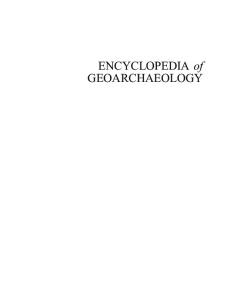Characterizing the Dispersion of Constituents in Concrete by Electrical Resistivity
- PDF / 367,555 Bytes
- 6 Pages / 414.72 x 648 pts Page_size
- 25 Downloads / 309 Views
Mat. Res. Soc. Symp. Proc. Vol. 500 © 1998 Materials Research Society
as provided by Ashland Petroleum Co. (Ashland, KY). The matrix was portland cement, Type I, from Lafarge Corporation (Southfield, MI); the mean particle size was from 0.1 to 0.2 Pim. The resistivity of the cement paste (with a water/cement ratio of 0.32, corresponding to a slump of 150 mm) at 7 days of curing was 1.49x 10' K.cm. The additional filler was silica fume (Elkem Materials, Inc., Pittsburgh, PA; EMS 965; average particle size 0.15 pim, particle size range 0.03-0.5 pm; 94% SI0 2) used in the amount of 15% of the cement weight. The addition of silica fume to the cement paste (with the water/cement ratio increased to 0.35 in order to maintain the slump at 130 mm) slightly increased the resistivity to 2.32x 10K2cm when the fibers were absent. This implies that the additional filler and the matrix were about the same in resistivity. However, when the fibers were present, the addition of silica fume decreased the resistivity, as described below. Because the fiber dispersion is enhanced by a small amount (0.4% of cement weight) of methylcellulose (Dow Chemical Corp., Midland, MI; Methocel A 15-LV), methylcellulose was used when the fibers were present, whether or not silica fume was present. The defoamer used with methylcellulose was Colloids 1010 (Colloids, Inc., Marietta, GA) in the amount of 0.13 vol.%. The methylcellulose had no effect on the resistivity when the fibers were absent. To investigate the effect of the particle size on the effectiveness of a filler in increasing the conductivity, sand (coarser than silica fume) was used in place of silica fume. It was natural sand (100% passing 2.36 mm sieve, 99.91% SI0 2). Its addition to cement paste (without silica fume or fibers) was associated with an increase of the water/cement ratio from 0.32 to 0.475, a resulting increase of the slump from 150 to 180 mm, and essentially no change in the resistivity. Thus, the resistivity of the sand was essentially the same as that of the cement paste matrix. Both types of additional filler were the same as the cement matrix in resistivity. The water/cement ratio and water-reducing-agent/cement ratio were chosen to increase with increasing fiber volume fraction in order to maintain the slump from 77 to 200 mm. The water reducing agent was TAMOL SN powder (Rohm and Haas), which contained 93%-96% sodium salt of a condensed naphthalenesulfonic acid. Mixing was conducted by using a Hobart mixer with a flat beater. Methylcellulose was dissolved in water and then the fibers and the defoamer were added and stirred by hand for 2 min. Then this mixture, cement, water and the water reducing agent (and sand and/or silica fume, if applicable) were mixed in the mixer for 5 min. After pouring the mix into oiled molds, a vibrator was used to reduce air bubbles. The volume resistivity at 7 days of curing were measured by the four-probe method, using silver paint for electrical contacts. The resistivity decreased much with increasing fiber volume fraction, whether a
Data Loading...











